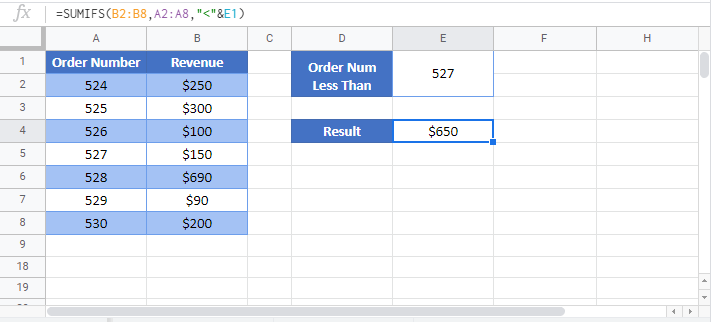Sum If Less Than or Equal To – Excel & Google Sheets
Download the example workbook
This tutorial will demonstrate how to use the SUMIFS Function to sum rows with data less than (or equal to) a specific value in Excel and Google Sheets.
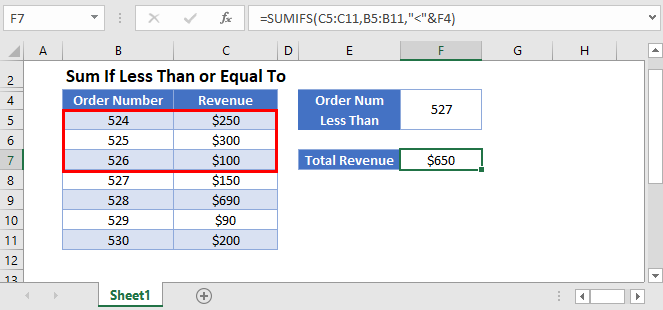
Sum if Less Than 0
The SUMIFS Function sums data rows that meet certain criteria. Its syntax is:
![]()
This example will sum all Scores that are less than zero.
=SUMIFS(C3:C9,C3:C9,"<0")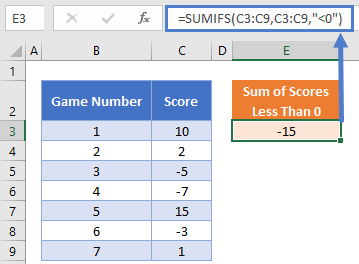
We include the criteria “<0” to sum all negative Scores. In this example, the sum_range and criteria_range are the same.
Sum if Less Than
This example sums the Revenue for all Order Numbers less than 527.
=SUMIFS(C3:C9,B3:B9,"<527")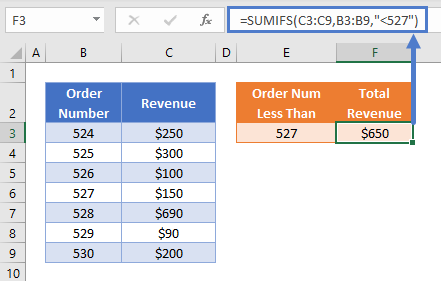
Sum if Less Than or Equal to
Instead if you’d like to include all Order Numbers less than or equal to, modify the criteria to be “<=527”:
=SUMIFS(C3:C9,B3:B9,"<=527")Sum if Less Than – Cell References
Usually, it is bad practice to hard-code values into formulas. Instead, it is more flexible to use a separate cell to define the criteria’s value.
=SUMIFS(C3:C9,B3:B9,"<"&E3)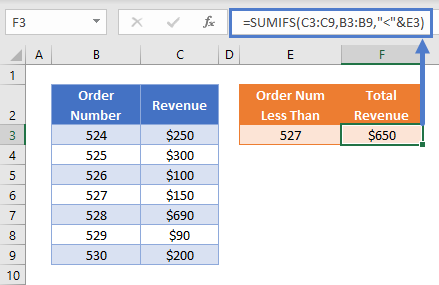
Now we add the logical operator within double quotes (“”) and use & to join the operator and the criteria value:
“<“&E3
Other logical operators can be used in this formula, such as:
- Equal to (“=”&E3)
- Less than or equal to (example: “<=”&E3)
- Greater than (“>”&E3)
- Greater than or equal to ( “>=”&E3)
- Not equal to (“<>”&E3)
Locking Cell References
To make our formulas easier to read, we’ve shown the formulas without locked cell references:
=SUMIFS(C3:C9,B3:B9,"<"&E3)But these formulas will not work properly when copy and pasted elsewhere in your file. Instead, you should use locked cell references like this:
=SUMIFS($C$3:$C$9,$B$3:$B$9,"<"&E3)Read our article on Locking Cell References to learn more.
Sum if Less Than in Google Sheets
These formulas work exactly the same in Google Sheets as in Excel.
